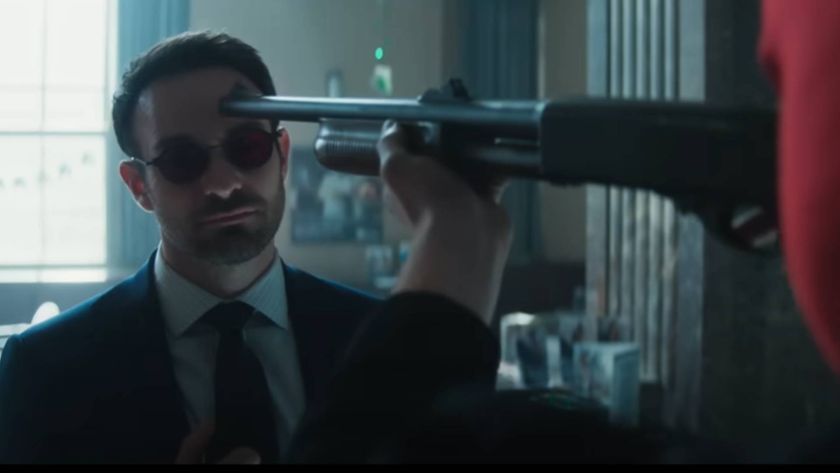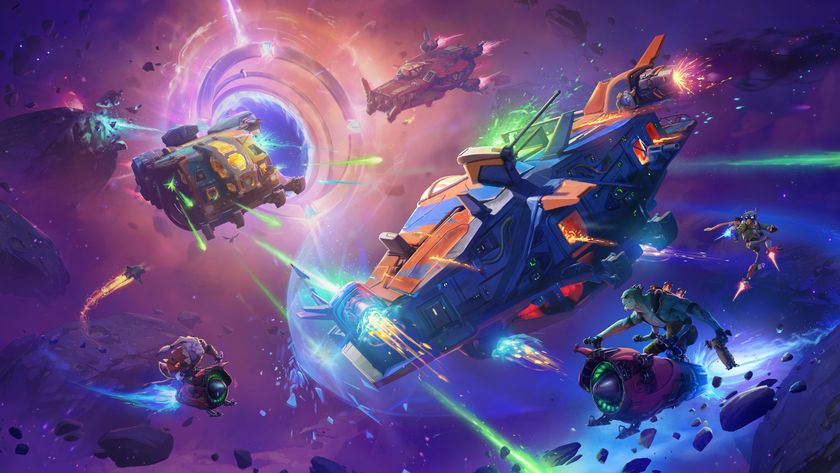Why Alan Wake has the best video game story-telling in years
Why the writer's literary quest is a big jump for video game narrative
On the surface of it, Alan Wake's system of seeking out lost manuscript pages in order to reveal additional story points seems generic. Outdated even, after BioShock's influential use of listen-while-you-play audio diaries. But if you thought that and then instantly disregarded the little glowing pages, you were wrong. And you missed out on one of Alan Wake's cleverest narrative techniques.

Above: There area couple ofcracking Max Payne in-jokes here too
You see they work very differently from how might expect. Rather than merely padding out background texture with details on how little Jimmy's corpse ended up torn in half at the top of that tree, they're a powerful engagement technique that makes the player think longer and harder about the story, Alan's place in it,and the in-game action, while simultaneously blending all of that stuff together.
At their most basic, they retell previously-played scenes from a different character's perspective, perhaps recounting their thoughts, feelings and actions just before Alan arrived or after he left. This of course puts the player and Alan's experiences intothe much wider, more organic context of a real, evolving world, but the real ace card is the way the pages are delivered.

Above: Keeping the accounts in Alan's voice is important for resonance, and making the player read them instillstheir impact further
Chronologically, they usually appear out of step with Alan's direct experiences. We might get a page which fills in the gaps of a scene an hour earlier, which immediately turns a forgotten, quick-thrill cutscene into a more significant and long-lasting event, making the player mull over the events and their significance again, and more deeply. The effect? The player is again thinking as Alan would, as he recycles recent horrors in his mind and comes to terms with them while trying to move forward.
Even better, we learn of plot points and set-pieces way in advance of them actually happening. Rather than being an in-game spoiler system,it's a bloody brilliant technique for building emotional and intellectual engagement. Example: Alan has been fighting through a forest full of jabbering woodsmenof death for the whole night. It's been tough, but the worst seems over. He's becoming hopeful, just as the player is getting used to the increased pace of the gameplay. Then he finds a page recounting a surprise attack by a chainsaw wielding manic. That attack hasn't happened yet. In fact we didn't even know there were any chainsaw weilding maniacs in this game. Oh. Shit.
Sign up to the GamesRadar+ Newsletter
Weekly digests, tales from the communities you love, and more
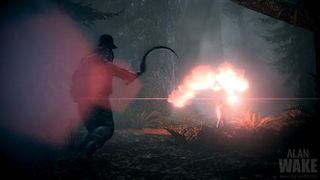
Above: Real horror is about prolonged fear, not quick jump-scares
And thus the feeling of dread is back. The fear of Alan's situation that we'd lost after blowingaway a few hundred Takenis suddenly heaped back on, twice as thick as before. It's a seriously clever way of ensuring that we never become blase about the game's story or Alan's plight, as so often happens when our confidence in our gameplay abilities overshadows the drama engineered by a game's narrative scenario. And by the time we finally hear that chainsaw revving in the darkness, we've worked ourselves up so much ('Is that him? Is that him? THAT'S HIM! Oh no, it's a tree') that the confrontation is frantic and terrifying and significant, where in another game it would have simply been another mini-boss fight.
Above: This really resonates on multiple levels towards the end
Throughout most of the game, Alan is lost and confused, and desperately trying to seek out answers and make sense of what's happening to him. By making the player physically seek out the story's most important and gratifying details on these pages, the game again puts us in the same position as him, using a gameplay mechanic to evoke in us the inner workings of our protagonist's mind.
Throw in extra, less literalthematic texture through Bright Falls' TV and radio broadcasts, and you've got one hell of a layered, literary narrative. That friends, is real video game story-telling, using the mechanics of the medium itself as a communicative tool. And it's an approach that's expanded to beautiful effect during the game's climax. Which I'll quickly go through now, in my last point.
A guiding light for game narrative
Okay, ultra-spoilers coming up right now. If you haven't finished Alan Wake, I implore you to bugger off and come back when you have. I'm not prepared to spoil this game for anyone.

Above: Gaming's first metaphorical torch
Everyone cool? Right, I'll carry on. In the game's climactic moments, Alan briefly travels through a darkness-shrouded netherworld, a realm existing within Cauldron Lake's shadowy abyss and transitional area between Bright Falls and the Dark Presence's dwelling place. Thisarea has already been described in a manuscript page as a place of swirling ideas and abstract concepts, the place that an artist'sthoughts and ideas are made real by way of their own creative processes
As Alan follows its path, he comes across words physically written in the air in front of him. These nouns reference common objects in the game, and when we blast themwith Alan's torch they become the very things they describe. The word 'bird' becomes a bird. The word 'phone' becomes a ringing payphone. This is a physical manifestation of Alan's literary mind trying to make intellectual sense of the remaining abstract mystery and darkness around him. Again, we're exploring and experiencing Alan's mental and emotional state through direct, hands-on gameplay.
Above: It looks like this metaphor will be built upon in the upcoming DLC. Here's hoping it's expanded as deflty as it's used during the game's climactic scenes
The earlier description evoked this place and situation well, but only now, when directly 'described' through the language of game mechanics, do we really understand it. Even moreso given that whilea soundscape of other characters' voice-overs fills in more detailon Bright Falls' past, Alan only makes progress when he answers the calls made directly to him via the phones he himself hasuncovered and made real.
Media discourse frequently talks about the language of cinema, the ways in which writing, shot composition and editing are combined to communicate more than the literal. And now, via games like Alan Wake, we're finally seeing game designers developing the language of video games. Game mechanics can be about much more than simply controlling a character. By thinking about their use expressively or as a metaphor, devs can make games as narratively rich as any other medium. It's starting this generation - Braid is another great example - and it's only going to build over the years, spreading further into mainstream games as it goes. The real maturation of games as a medium starts here, and I'm incredibly excited.
What do you think? How deeply were you drawn into Alan Wake? Did you explore all of its secrets, ot just get your head down and blast your way through? And how important is story-telling to you in games, and how do you like it delivered? Give me all your brain's outpourings in the comments section, or via our throbbing social portals onFacebookandTwitter.




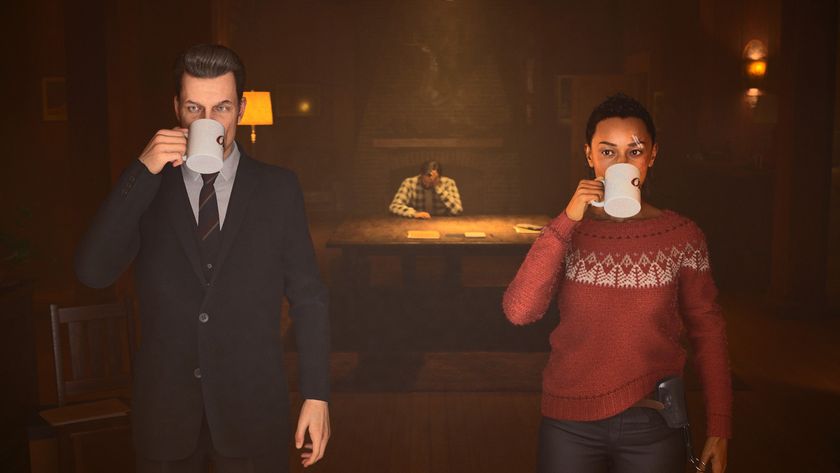






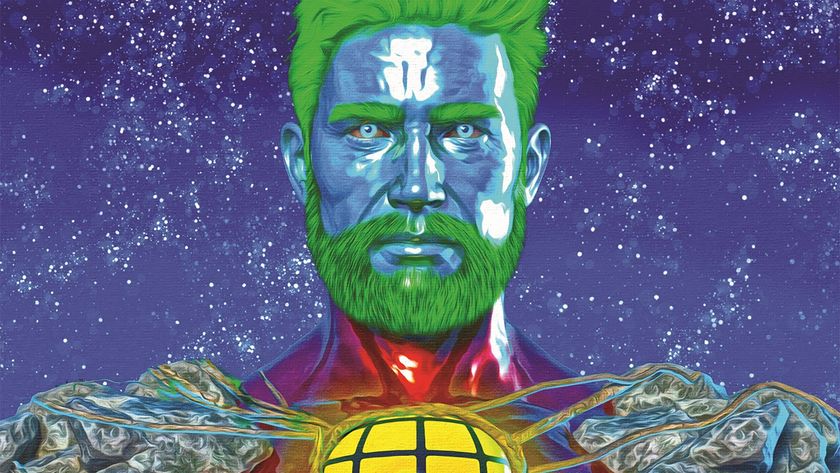

The Remedy Connected Universe that ties Alan Wake 2 and Control is "just getting started" with no endgame in sight, says Sam Lake

As Remedy nearly breaks even with Alan Wake 2 sales, Sam Lake tells investors "we strive to create commercial hits" but "we must never lose" the studio's special sauce




